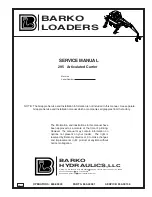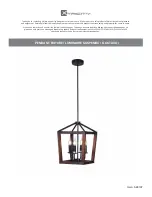
Choosing Accessories
Angle Sail Blade
High-Lift, Parallel-Sail
Blade
(Do not use with
the mulching baffle)
Mulching Baffle
Roller Scraper
Grass Cutting—1.9 to
4.4 cm (3/4 to 1-3/4
inches) height of cut
Recommended in most
applications
May work well in light or
sparse turf
Grass Cutting—5 to 6.4
cm (2 to 2-1/2 inches)
height of cut
Recommended for thick
or lush turf
Recommended for light
or sparse turf
Grass Cutting—7 to 10
cm (2-3/4 to 4 inches)
height of cut
May work well in lush turf
Recommended in most
applications
Has been shown to
improve dispersion and
after cut performance
on northern grasses that
are cut at least 3 times
per week and less than
1/3 of the grass blade
is removed;
do not
use with the high-lift,
parallel-sail blade
Leaf Mulching
Recommended for use
with the mulching baffle
Not allowed
Use with combination
sail or angle sail blade
only
Can be used whenever
the rollers build up with
grass or large flat grass
clumps of grass are
seen; the scrapers may
increase clumping in
certain applications.
Pros
Even discharge at lower
height of cut; cleaner
look around bunkers and
fairways; lower power
requirements
More lift and higher
discharge velocity;
sparse or limp turf is
picked up at high height
of cut; wet or sticky
clippings are discharged
efficiently
May improve dispersion
and appearance in
certain grass cutting
applications; very good
for leaf mulching
Reduces roller buildup
in certain applications
Cons
Does not lift the grass
well in high height-of-cut
applications; wet or
sticky grass has a
tendency to buildup in
the chamber, leading
to poor quality of cut
and higher power
requirements
Requires more power to
run in some applications;
tends to windrow at
lower height of cut in
lush grass; cannot be
used with the mulching
baffle
Grass will build up in the
chamber if attempting to
remove too much grass
with baffle in place
During Operation
During Operation Safety
General Safety
•
The owner/operator can prevent and is responsible
for accidents that may cause personal injury or
property damage.
•
Wear appropriate clothing, including eye
protection; slip-resistant, substantial foot
protection; and hearing protection. Tie back long
hair and do not wear jewelry.
•
Do not operate the machine while ill, tired, or
under the influence of alcohol or drugs.
•
Never carry passengers on the machine and keep
bystanders and pets away from the machine
during operation.
•
Operate the machine only in good visibility. Avoid
holes or hidden hazards.
•
Avoid mowing on wet grass. Reduced traction
could cause the machine to slide.
•
Before you start the engine, ensure that all drives
are in neutral, the parking brake is engaged, and
you are in the operating position.
•
Keep your hands and feet away from the cutting
units. Keep clear of the discharge opening at all
times.
•
Look behind and down before backing up to be
sure of a clear path.
•
Use care when approaching blind corners, shrubs,
trees, or other objects that may obscure your
vision.
•
Do not mow near drop-offs, ditches, or
embankments. The machine could suddenly roll
over if a wheel goes over the edge or if the edge
gives way.
•
Stop the blades whenever you are not mowing.
•
Stop the machine and inspect the blades after
striking an object or if there is an abnormal
vibration in the machine. Make all necessary
repairs before resuming operation.
•
Slow down and use caution when making turns
and crossing roads and sidewalks with the
machine. Always yield the right-of-way.
30
















































